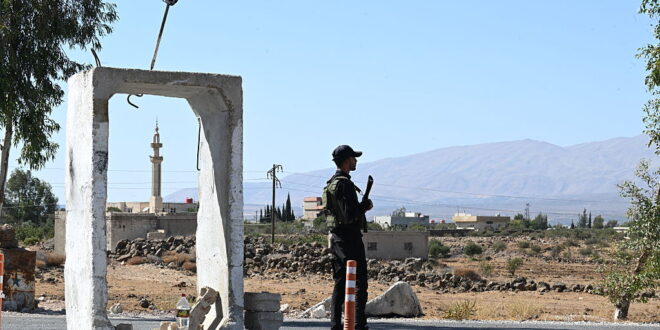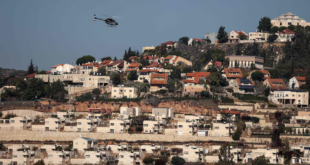Hezbollah may not be fully up and running in Syria following the fall of the Bashar al-Assad regime, but it is still seeking to take advantage of the instability in the country, along with other militant groups. The Iranian-backed terror group is still using Syria as a corridor to arm its forces in Lebanon, and just as troubling, a Syrian official confirmed that remnants of Iran-linked militias continue to operate in Quneitra, close to Israel’s border.
On September 29, Syria’s Interior Ministry claimed that authorities had “seized 200 Grad rockets in a warehouse in Al-Qusayr, in Homs’ western countryside.” Al-Qusayr was considered Hezbollah’s most important strategic base during the Syrian civil war because of the town’s proximity to the Lebanese border and was often used for weapon smuggling operations. Despite the Iran-backed group leaving the area following the fall of the Assad regime, Iran and its proxies continue to exploit Syria’s porous border to quietly rebuild Hezbollah’s arsenal after the terrorist group’s heavy losses in its war with Israel.
Hezbollah Still Uses Syrian Territory To Smuggle Weapons and Plan Terrorist Activities
Syrian authorities have thwarted dozens of attempts to smuggle a wide array of weapons to Hezbollah, most of them along longstanding routes. But these forces lack the capacity to stop every smuggling attempt. They are already overstretched as the government in Damascus struggles to maintain order in the territory under its control. The government has previously launched border-clearing operations, but the results have been uneven. On the other side of the border, the Lebanese Armed Forces have been reluctant to act and there is little evidence that they are seizing any weapons once they cross into Lebanon’s territory.
Iran-Backed Militias Operating in Southern Syria
Since the fall of the Assad regime in December 2024, southern Syria — including Quneitra — has fallen into chaos. That is despite — or partially because of — efforts by Damascus to assert complete control. The instability has allowed independent armed factions to emerge, most notably the Islamic Resistance in Syria, a group connected with Iran’s so-called “Axis of Resistance” and allied with remnants of Assad’s security forces.
During Syria’s civil war, southern Syria served as a stronghold for Iranian proxies that were tasked with threatening Israel, and there are still remnants of those networks. On September 12, the Israel Defense Forces arrested operatives affiliated with Assad’s notorious 4th Armored Division and Iran’s Islamic Revolutionary Guard Corps’ Quds Force in southern Syria.
Hezbollah has also planted cells to carry out attacks inside Syria. On September 11, Syrian authorities arrested a Hezbollah cell composed of several individuals operating in Sasa and Kanaker in Rif Dimashq, just a few kilometers east of the demilitarized zone area that Israel seized following the fall of the Assad regime.
Washington Should Encourage Syria-Israel Alignment to Push Back on Iran
President Donald Trump lifted sanctions on Syria with the expectation that the country’s new government would prevent it from becoming a launchpad for cross-border attacks on Israel. Syria and Israel are currently negotiating a U.S.-brokered security agreement centered on a return to the 1974 disengagement plan, which separated Syrian and Israeli forces, placed UN peacekeepers in the buffer zone, and restored Mount Hermon to Syrian control. Washington should continue urging both countries to sign the agreement and ask President Ahmad al-Sharaa to fully cooperate with Israel in neutralizing threats along his southern border. Sharaa himself has acknowledged that Syria and Israel “have common enemies” and he should act on that recognition by working to purge Iran-backed militias from Syrian territory. At the same time, the United States should consider placing stricter conditions on aid to Lebanon, making it clear that continued reluctance to stop Iranian weapons transfers will carry consequences.
 Eurasia Press & News
Eurasia Press & News


